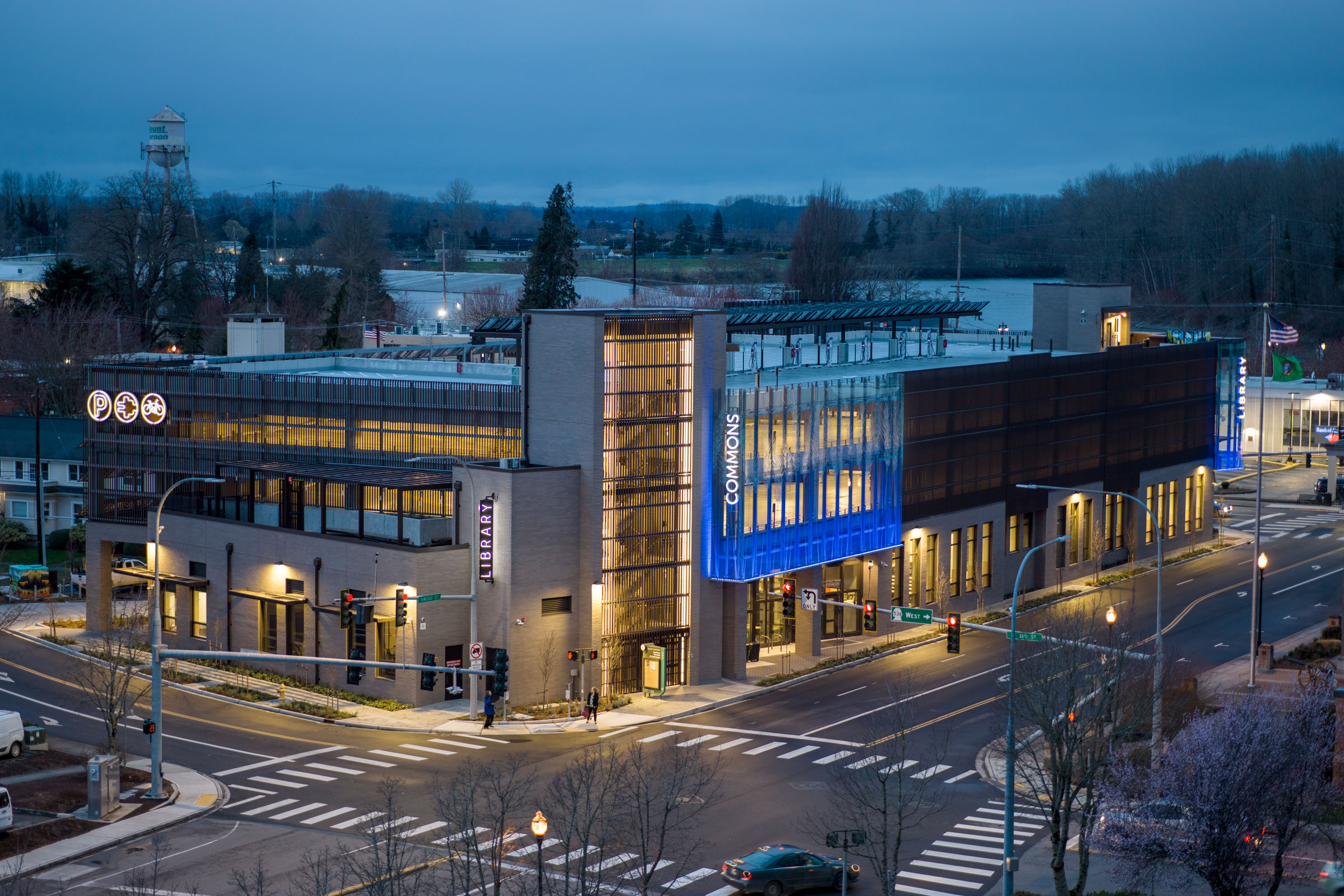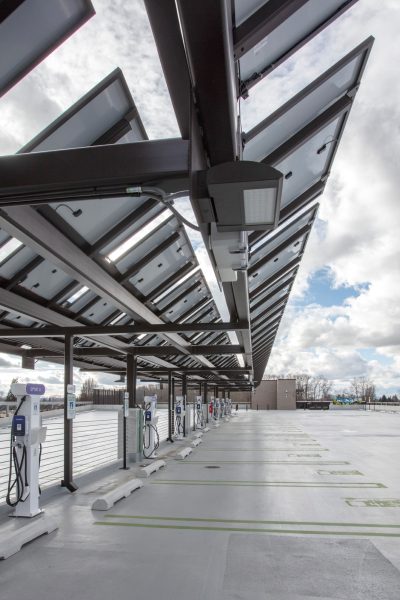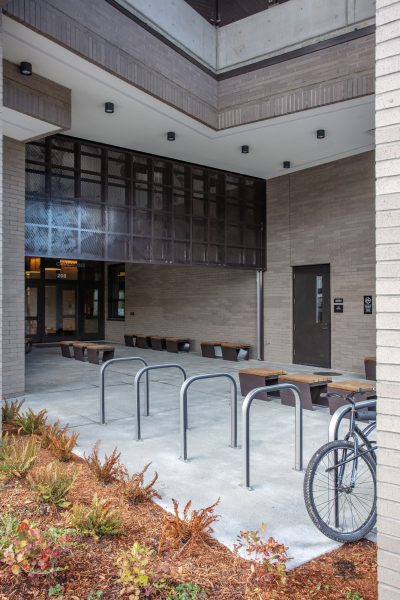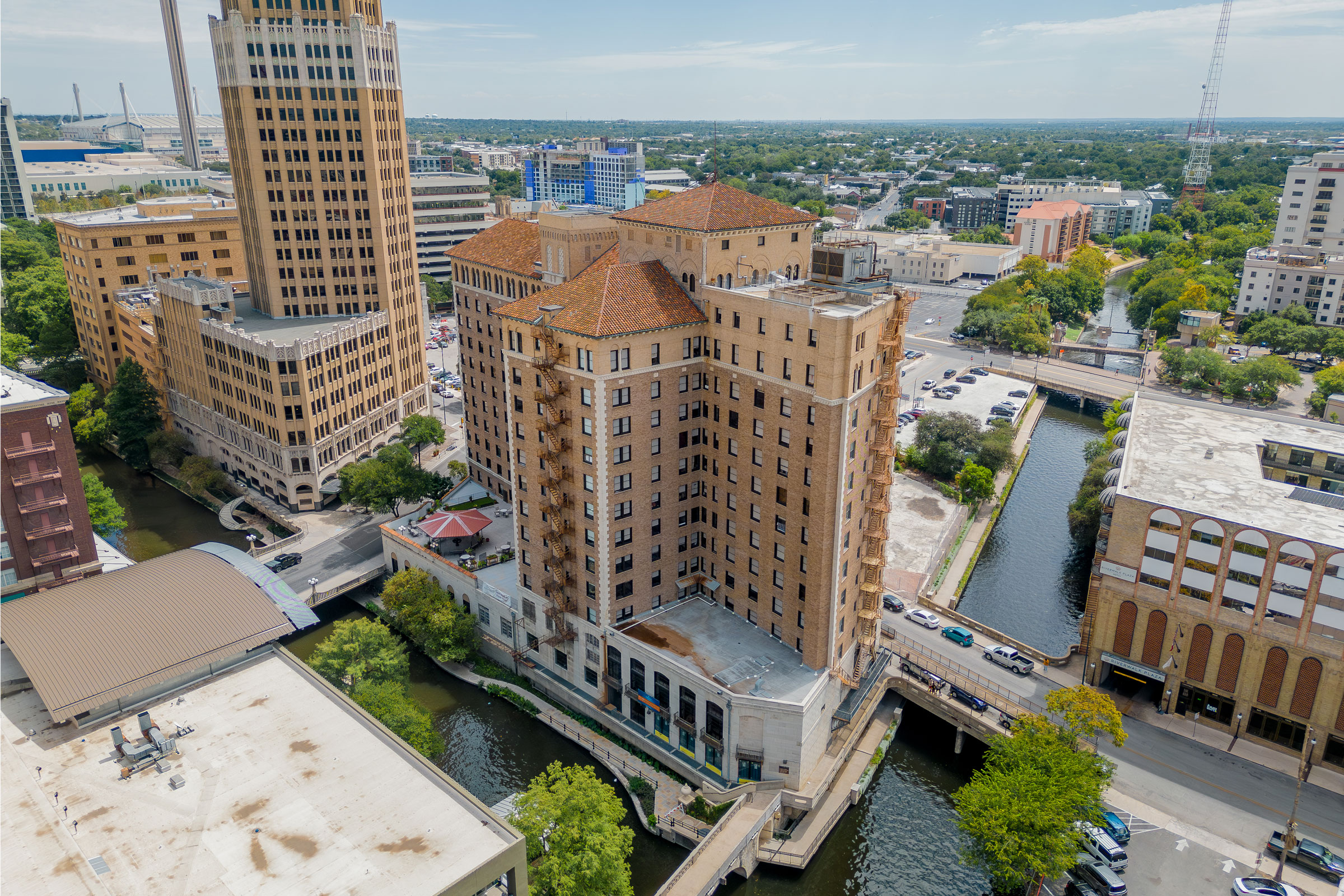Story at a glance:
- HKP Architects designed a small town library to raise the bar for public architecture.
- The project demonstrates how it’s possible to create buildings that lead on climate, equity, and long-term value—even in a small, rural city.
Mount Vernon, Washington, is a small city of just over 36,000 people, nestled in the heart of the Skagit Valley along the I-5 corridor between Seattle and Vancouver, British Columbia. Known more for tulip fields and agricultural heritage than cutting-edge infrastructure, Mount Vernon isn’t the kind of place most people associate with ambitious civic design or bold climate action. But that’s exactly what makes the Mount Vernon Library Commons (MVLC) so important.
Located in a federally designated Justice40 community—where residents have historically faced disproportionate environmental and economic burdens—Mount Vernon made a deliberate choice to invest in a resilient, inclusive, and forward-thinking public project. This is not a big city project backed by a private developer or delivered through a design-build partnership. It’s a publicly funded, publicly bid civic facility that challenges long-held assumptions about what small communities can accomplish.
When HKP Architects was selected to design MVLC—the city’s first new construction project in more than 20 years—we saw an opportunity to raise the bar for what public architecture could be. The building brings together a public library, community center, commercial kitchen, structured parking, and the largest public EV charging station in the country, all in one highly efficient, all-electric facility. It is also one of the first publicly bid projects in the United States to pursue Passive House certification.
From the outset the City of Mount Vernon made it clear that this project needed to do more than just serve immediate needs. It needed to model what smart, sustainable, community-centered design looks like, without requiring a major metropolitan budget. It was a chance to show that even in a small, rural city, it’s possible to create buildings that lead on climate, equity, and long-term value.
Passive House in the Public Sector
- Photo by Leslie Schwartz Photography, courtesy of HKP Architects
- Photo by Leslie Schwartz Photography, courtesy of HKP Architects
We pursued Passive House certification because we believe the most meaningful way architects can address climate change is by reducing a building’s energy use—and by extension, its carbon emissions—through both design and performance. Passive House provides one of the most efficient and impactful paths to achieving that. It also supports better air quality, thermal comfort, and acoustics, which are important performance goals in any public building.
Achieving Passive House on a publicly bid project required detailed documentation and extensive coordination with trades unfamiliar with the standard. There was a learning curve, but with clear communication and consistent onsite collaboration, the project team met the challenge. The resulting energy use intensity (EUI) of 12—far below the Washington State Energy Code maximum of 47—and blower door test results four times better than required are evidence of what’s achievable, even within the constraints of public procurement. Achieving this required a tightly coordinated building envelope, high-efficiency mechanical systems, and a commitment to reducing both operational and embodied carbon from the earliest stages of design. It means lower utility costs over time, increased comfort, and a significant reduction in climate impact for the city.
Reducing Carbon Where It Counts

Photo by Leslie Schwartz Photography, courtesy of HKP Architects
Given the project’s size and structural needs, concrete was the most appropriate material. But we also recognized its carbon impact, comprising 55% of the structure by volume. Through careful specification and collaboration with suppliers, we aimed to reduce the Global Warming Potential (GWP) of the concrete by 30 to 35%, primarily by minimizing cement content and incorporating alternative materials like fly ash, slag, and limestone. In total the project achieved a remarkable 41% GWP reduction in the concrete work over typical construction.
This work not only reduced the project’s environmental impact but also helped bring awareness of embodied carbon to our broader project team, including local trades and suppliers.
Centered on Community
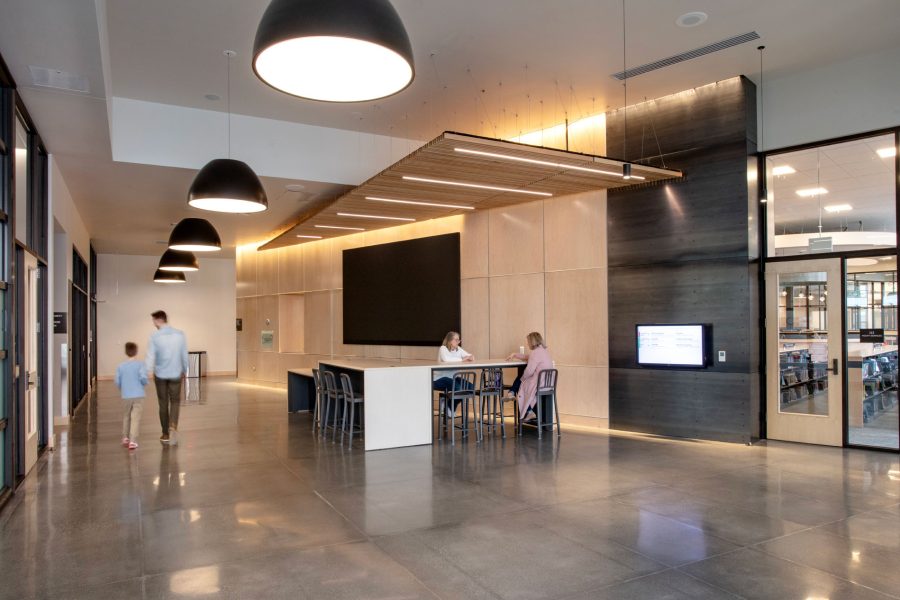
Photo by Leslie Schwartz Photography, courtesy of HKP Architects
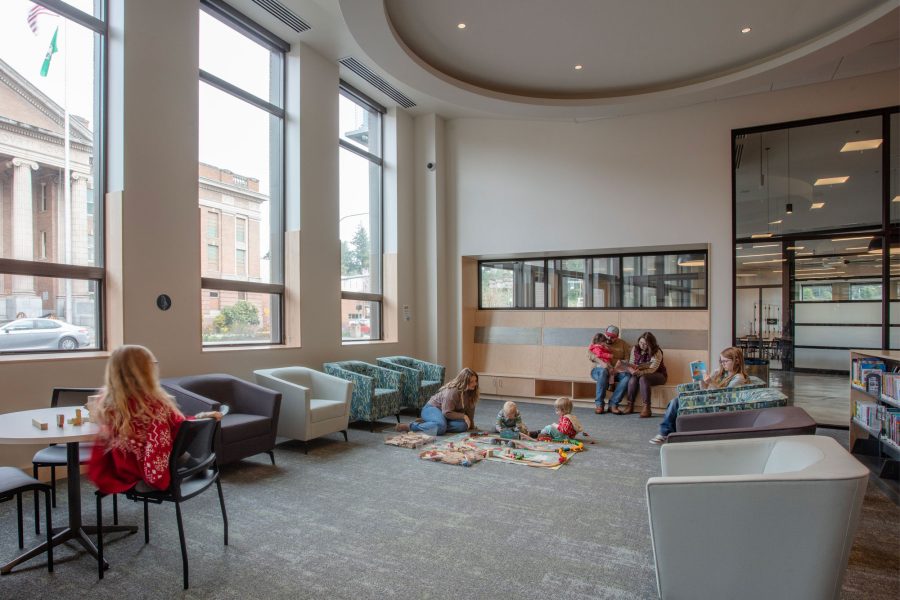
Photo by Leslie Schwartz Photography, courtesy of HKP Architects
MVLC is a multi-functional space designed for flexibility, accessibility, and longevity. It includes library areas for children, young adults, and adults; meeting rooms; and flexible commons for events and informal gatherings. A second-floor terrace offers outdoor space for community use and highlights the historical development of modes of travel along the I-5 corridor. A rooftop deck provides expansive views of downtown Mount Vernon and the Skagit River.
One of the more distinctive features is the commercial kitchen, which can be used by caterers during events, by the library for cooking demonstrations, or rented by local entrepreneurs to develop value-added agricultural products and other locally made goods. It was also designed to support future Meals on Wheels operations and serve as a community kitchen in times of emergency. Thanks to its Passive House performance, the building can function as a temporary shelter during severe weather events.
The EV infrastructure—combined with structured parking and proximity to Skagit Station—serves as a major economic driver for downtown. It supports clean mobility, attracts visitors to shop and dine, and provides parking to accommodate future housing development.
Impact Beyond Mount Vernon
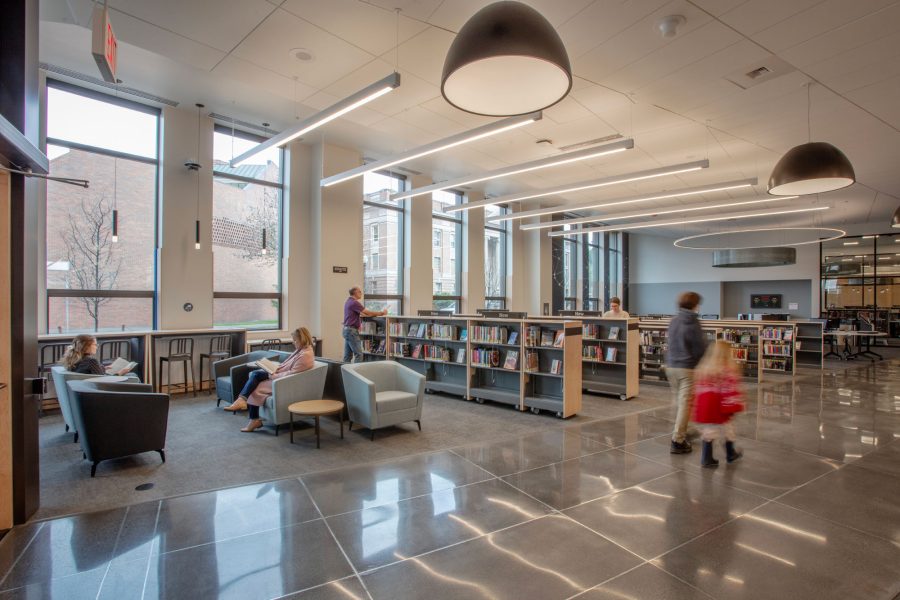
Photo by Leslie Schwartz Photography, courtesy of HKP Architects
This $61 million project was funded through approximately 20 sources, including a $12.5 million grant from the Bipartisan Infrastructure Law and a TIFIA loan from the US Department of Transportation, making it the first transit-oriented development in the country to receive such a loan. All of this was accomplished without raising local property taxes.
As a project that brings together sustainability, multimodal access, and community infrastructure in one facility, MVLC offers a clear example of what’s possible when design, funding, and policy are aligned. It shows that with the right vision and commitment, public projects can lead on climate action, equity, and long-term community value, regardless of location or size.
What It’s Like to Be There
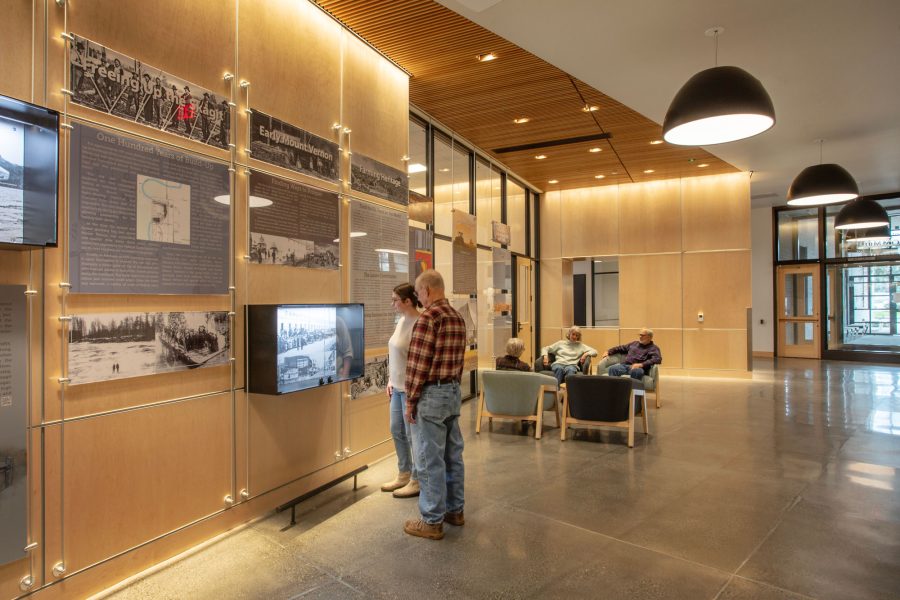
Photo by Leslie Schwartz Photography, courtesy of HKP Architects
Our goal with any project is for the design to feel intuitive, where people understand how to move through the building without needing signage, and where the spaces feel welcoming and clear. At MVLC that clarity of circulation is paired with consistent thermal comfort, natural daylight, and a restrained palette of materials and finishes that feel grounded and calm.
If I had to choose a favorite space, it would be the first-floor commons. It’s where people arrive, meet, and start exploring. It embodies the project’s purpose: to bring people together, support learning, and reflect the values of a community that chose to invest in its future.

